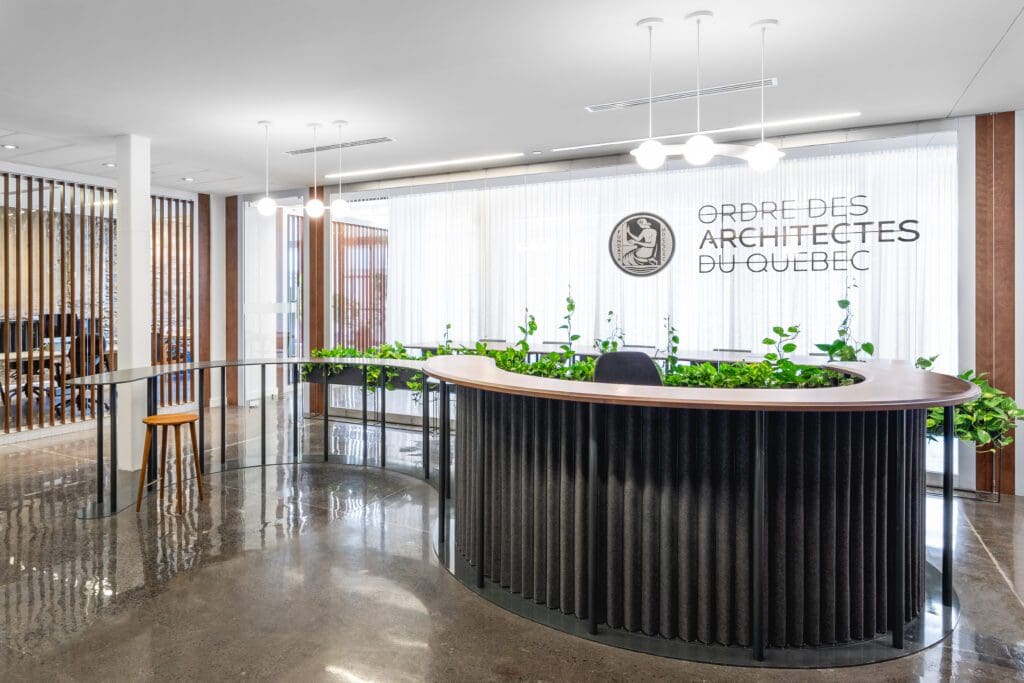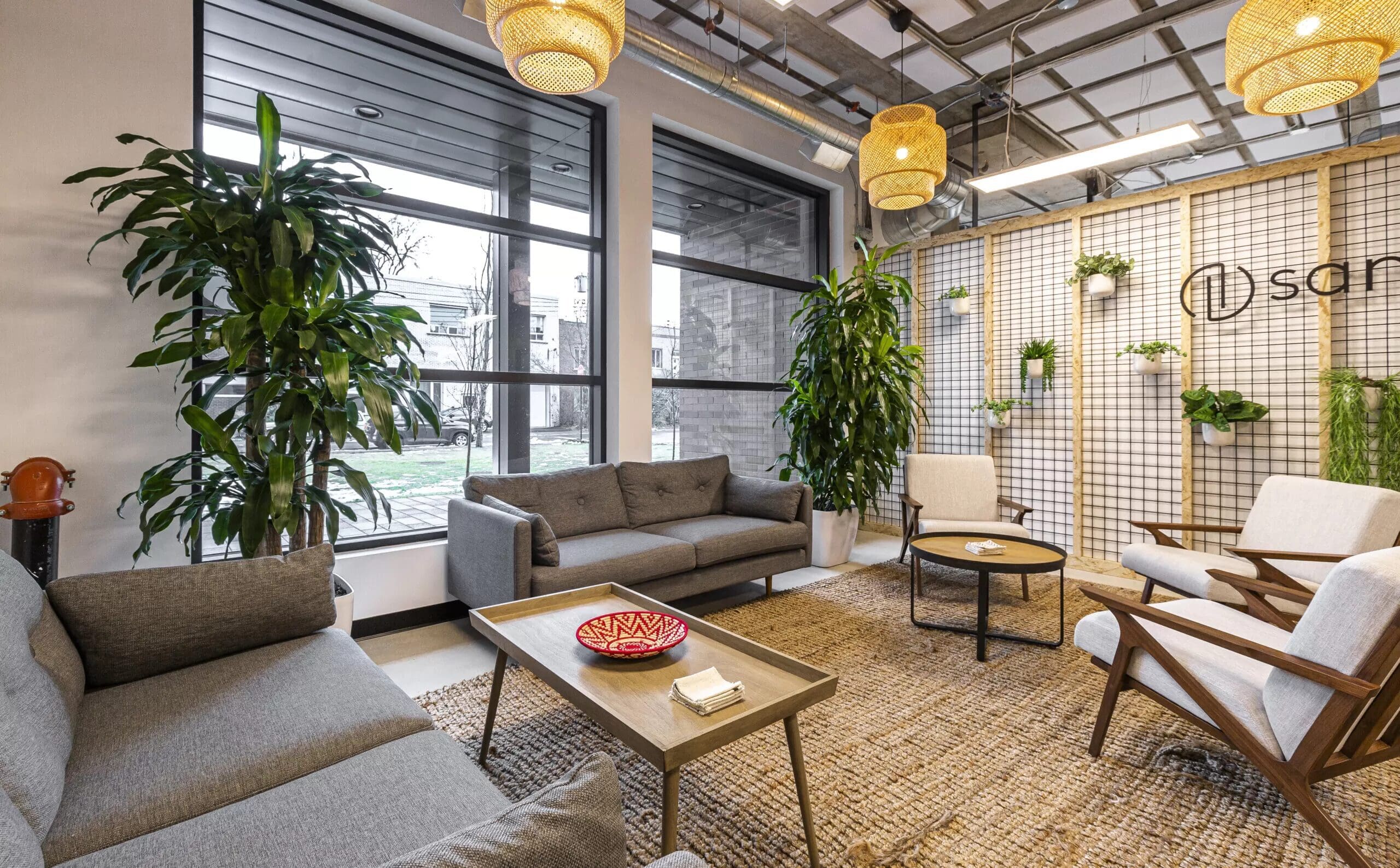Office space
September 7, 2020
Biophilic Design Contributes to Human Well-Being

Office - Ordre des Architectes du Québec
Biophilia emphasizes the importance of contact with nature for humans and their development. It was the American psychologist Edward O. Wilson who, in the 1980s, put forward the idea that humans have an innate tendency to seek connections with nature and with other forms of life. He calls this idea “the biophilia hypothesis,” a spontaneous need for other forms of life.
For more on Edward O. Wilson’s “biophilia hypothesis”, check out this blog post

What is biophilic design?
Biophilic design uses a few simple principles to create a human-centered approach when designing buildings and interior and exterior spaces. It brings human beings closer to their innate attraction to nature and green spaces thanks to the presence of natural elements or elements reminiscent of nature in buildings and their exterior components (balcony, terrace, garden, etc.).
Biophilic design will therefore play an increasingly important role in the creation of workspaces in future years.
Already, companies such as Apple, Google, Etsy, Airbnb, Amazon and Microsoft invest heavily in biophilic design elements when fitting out their offices.
The advantages of a biophilic design
Numerous studies have shown that including biophilic elements in the design of workspaces provides numerous benefits for the health and well-being of employees. Indeed, many of them have reported feeling rejuvenated, energized and inspired by plant life, natural lighting and other natural elements of design in biophilic workspaces.
In addition, the “Journal of Experimental Psychology: Applied” published a study in 2014 which showed that the presence of living green plants inside a building increases occupants’ sense of well-being by 40%.
The main advantages of a biophilic design:
- Increased concentration
- Improved engagement
- Reduction of absenteeism
- Increase in productivity (8% on average)
- Increase in well-being (13% on average) and mood
- Reduced stress and anxiety
- Increased creativity and cognitive abilities

The various elements of a biophilic design
In workspaces, the natural elements will stimulate the senses as well as the self-awareness and concentration of the employees.
Here is a non-exhaustive list of the most common elements found in a biophilic design:
- Many living green plants
- Living walls
- Natural skylights letting the sun’s rays in
- Indoor gardens
- Openings to outdoor nature
- Access leading to a naturally landscaped outdoor area
- Colors reminiscent of nature
- Natural materials
- Tactile fabrics reminiscent of nature
- Fountains or spaces with water
Nature can also be evoked by geometric shapes, trompe l’oeil, juxtapositions of materials, angles, evocations of tree-storage, meeting-garden rooms or even by offices designed in a geometric French-style garden-like shape.
Do you want to arrange your offices in such a way as to integrate natural elements?
Looking For Advice Regarding Your Project?
Contact usShare